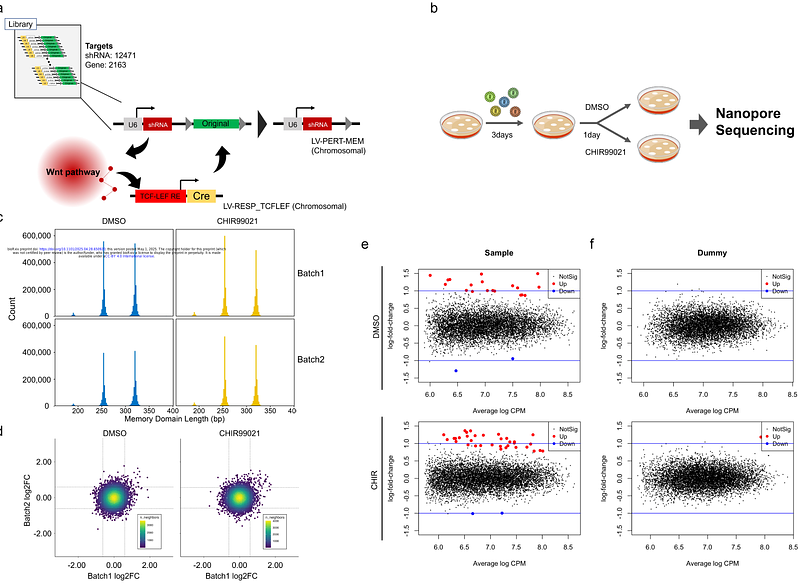Proof-of-Concept of A DNA-Based Recording System for High-Throughput Functional Gene Screening

Proof-of-Concept of A DNA-Based Recording System for High-Throughput Functional Gene Screening
Kato, S.; Ikemoto, A.; Isayama, J.; Takimoto, T.; Saya, H.; Hamada, K.-i.
AbstractGenetic functional screening technologies which identify causative genes are essential for advancing life sciences and improving drug discovery outcomes. Traditional array-based screening methods, which require significant cell numbers, face limitations when working with samples that have low proliferation capacity. While pooled library methods such as CRISPR screens can be solutions to these experimental efficiency challenges, there is still room for improvement in terms of cost and convenience. In response to these challenges, we developed PiER (Perturbation-induced intracellular events recorder) technology. PiER facilitates gene perturbation and intracellular signal detection through a novel system that integrates three DNA domains. The Perturbation domain induces gene-specific disturbances, the Response domain expresses an enzyme upon desired cellular signals, and the Memory domain records perturbation history by altering its DNA sequence via the expressed enzyme. To demonstrate PiER\'s potential, we designed a vector which has a Response domain that detects WNT pathway activation. Transfecting HEK293 cells, we observed dose-dependent responses to WNT pathway activation using fluorescence microscopy and quantitative Polymerase Chain Reaction (qPCR), which confirmed successful intracellular event recording in the Memory domain. Further experiments with lentiviral PiER vectors containing a pooled shRNA library revealed the system\'s capability to conduct high-throughput screening by analyzing perturbations and their effects within individual cells. PiER technology significantly enhances screening capabilities by offering a versatile and scalable approach that can be deployed without prior cell modification and single-cell isolation. Its high throughput, combined with requiring minimal effort, presents a significant advancement for genomic research and drug target discovery.